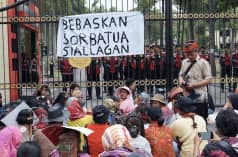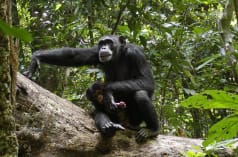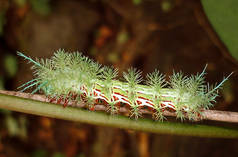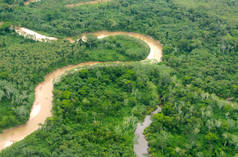Food versus Jatropha
Nov 23, 2008
Defined as areas that receive low rainfall and are problematic sites in terms of soil erosion because the little rainfall they receive comes in heavy down pour. These regions have very fragile ecosystems. Since they are fragile, these areas are subject to environment stress of deforestation, prolonged draughts, decreasing soil and ground water. However the term marginal does not mean that these lands are uninhabited or waste. They support very large human and animal population.
A Case for Small Scale Farmer in Kenya Marginal lands
Defined as areas that receive low rainfall and are problematic sites in terms of soil erosion because the little rainfall they receive comes in heavy down pour. These regions have very fragile ecosystems. Since they are fragile, these areas are subject to environment stress of deforestation, prolonged draughts, decreasing soil and ground water. However the term marginal does not mean that these lands are uninhabited or waste. They support very large human and animal population. Most of Kenya falls under this category e.g. North Rift districts of Turkana, Samburu, Mararal, Kapenguria, North Eastern provinces, the upper Eastern province and South Rift. The myth the west uses is that marginal lands are waste lands, this can never be further from the truth. These areas also have food crops that are adopted to these regions. However poor Agricultural practices based on monocultures have introduced food crops that are not site adopted in these areas e.g. the growth of maize varieties that are not adapted to these regions increasing food insecurity and leading to food aid dependency. To reclaim marginal lands “Scientific Interventions” have been introduced, of such intervention is the introduction of prosopis juliflora, locally known as Mathenge a weed introduced in the 1970’s in Baringo district, the home of minority Illchamus community. The Illchamus community occupies 2 divisions of Marigat and Lokutan. These communities have gone to court and the court ruled that the government be held liable for the loss visited on the community and the environment. The prosopis juliflora – a weed, was introduced to curb soil erosion, based on the fact that it was draught resistant, hardy, establishes easily because it grows relatively quickly. These were the only factor considered then. The plant now occupies half of the communities land and were it not for their efforts to try and fight the plant, they would have no land by now. The weed is very invasive, with seeds that are prolific in production, long life and high germination rate. Seeds are dispersed by wind, the plant has a rapid maturation to seed producing stage and strong vegetative growth all signs of a nightmare for other plants. The mathenge plant is a big danger to the people of Marigat and Lokitan. The plant is toxic. If one is injured say by being pricked by a thorn or piece of this plant the wound formed do not heal for a long time. As is the case that went to court a goat was shown to have been rendered partially toothless by the plant. The weed has maimed people and livestock, the thorns cause paralysis of the limbs leading to amputation. According to one resident Mr. Charles Nabori, the weed was introduced by officials from the food and Agricultural Organization (FAO) and the forestry department when he served in the area as a chief. He told the court that he has shifted from his home after it was invaded by the weed. Has the government learnt from this lesson? The answer is no. Listen to jatropha case in Kenya.
JATROPHA
Myth – "Jatropha Curcus does very well in areas of low rainfall and 'problematic sites' because it is easy to establish, grows relatively quickly, is hardy and draught resistant. It can be used to reclaim eroded areas. It can be grown as a boundary fence or live hedge in arid and semi arid areas." What a nice argument obtained after a workshop sponsored by the Rockfeller foundation and the Scientific and Industrial research development center – Zibambwe. This argument could have been the same in the 1970’s for prosopis juliflora. Now being replayed 20 years later, same argument, same people, different plant, the “Margical jatropha Curcas.” Hear this – jatropha is not browsed, the leaves and stem are toxic to animals, but the cake after “treatment” can be used as animals feed talk of sugar coated poison. Origin of jatropha in Kenya. I may not have the exact dates but jatropha was introduced from central America by various players such as the Green Africa foundations – founded by funds from Prince Albert II De Manaco, Jomo Kenyatta University of Science and Technology through Help Self – Help Center based in Narumoro near Nanyuki town currently producing 600-1000 liters of biodiesel per day funded by the Japanese government.
Jatropha current position in Kenya
Through the Green Africa foundation, small scale farmers in the Southern part of Eastern province i.e. Kitui, Mwingi, Makueni, Kutus etc are being lured into contractual growing of jatropha, the myth is:
(1) A farmer can grow own diesel, decentralizing the energy source. This will be a major boost for economic growth.
(2) One jatropha plant can produce 1 liter per year for 40 years.
(3) 90% of the work can be performed by the women therefore directly helping their revenue earning potential
(4) Jatropha is a draught resistant crop that grows on “bad soils” (call them marginal). More over it creates top soil and therefore helps make land arable (reclaiming the “waste lands”) A rosy picture indeed but unfortunately what is actually happening does not support this optimistic views with jatropha in Kenya. Jatropha raises serious concerns about environment, food and social impact.
(i) Countries like Western Australia banned its growth due to its being toxic to animals and human beings – has this information been made available to the farmers in Kenya? Definitely No.
(ii) The plant has the capacity to become a hard – to control. Invasive weed just like mathenge (prosopis juliflora)
(iiI) Myths – farmers can grow jatropha in dry areas without irrigation and on poor soil. Technically this is true however the yield will be so low under this condition and therefore non tenable. Studies in India show that without irrigation, average yield in 5 years is 1.1 to 2.75 tons per hectare compared to5.25 to 12.1 ton per hectare with irrigation. Therefore, it seems that instead of being grown in the said marginal areas’ Jatropha in Kenya for production of agro fuels will compete directly with production of food on the most fertile, irrigated land. What a disaster on food production which is already experiencing problems.
(iv) Who will grow jatropha in Kenya? Proponents say the crop is ideal for small – scale farmers In practice, the small scale farmers are being pushed aside for corporate controlled production, either on large scale production (monocultures)controlled by multi national or through stringent contract agreement production where small scale farmers are USED. The Minster for Agriculture – Hon Ruto in october announces that 500,000 acres of land will be set aside for cultivations of jatropha the question that begs is. Who will give this land, will it be curved from the existing forests? My wild guess is that this project could have been behind the ethnic cleansing in some parts of Kenya to create room for this multinational. Let us wait and see. Like in most parts of the world jatropha has been converted into another plantation based Agric-business commodity tightly controlled from seed to fuel production by multinational corporation most of them in the existing petroleum industry. E.g.
1. British petroleum – plans to establish 100,000 hectares in Indonesia
2. Van der Host – in Singapore is Building a 200,000 – type bio diesel plant in Juran Islands
3. Mission Biofuels – Australia – hired Agro Diesel of India to manage 10,000 hectares in India and Malaysia
4. DOl oil – in Philippines
5. NRG Chemicals in UK – Owns 70% state In a joint venture in state owned Philippians’ national oil company.
6. in Kenya Xenerga Inc a USA Based company and EUROFUEL – Technology a German based company. are companies behind the plantations in Kenya. From the above data, who in fooling who; is the small scale farmer anywhere in the picture, are plantations being established in the desert or semi-desert? Your guess is as good as mine. Other statistic show that
1. DOI has plantation in Ghana, Zambia, South Africa and Swaziland in Africa or are using farmers to grow Jatropha for them through contrast growing agreement managed by DO1’s local partners such as Williamsons major Group. in Kenya the system is used through Green power East Africa, who are constructing a Biodiesel plant in Nairobi, the Green Africa foundation is coordinating the plantation efforts on Biwakos behalf – a Japanese firm. Under the Green Africa foundation they claim to have planted over 500,000 seedling this season is Eastern Rift valley, Coast and Nyanza provinces
2. Kenya Bio – diesel Association (who membership is questionable) was formed to promote Jatrapha in Kenya as an outcome of the 2008 National Bio conference in Nairobi – Funded by who? Japans BIWAKO – Bio laboratory. And will invest US Dollars 19.4 million in a Jatropha biodisel facility and plantation in an undisclosed location in Kenya (we will soon find out). This is just the tip of the iceberg a monster; in fact what others would call a vampire is in the making. Bio diesel are being taunted as ALTERNATIVE fuels, how can they be alternative while those in control are also the major players in the petroleum Business? These are sweet words to hood wink the people while they are slowly being led down the slaughter house. How the growths of Biofuels can improves the economic status of the women and people who grow them? How will this improve their food security? If - to quote a farmer Paul Maina (Daily Nation 2nd October 2008) “The alternative fuel has seen farmers in Narumoru abandoning what they normally cultivate to turn to the new crop” – is this the way to enhance food security? is it formed by research and good will of the people? Similar “green revolutions” have been tried in Africa in the past .e.g. in the 1970s Kenya farmers were encourage to grow Coffee & tea for export to improve their economics status ,this resulted in food scarcity, and high food prices that have remained so. After the world tea and coffee market crumbled. The farmers today feel cheated but this was deliberately designed to be so. They grow the crops for cartels whose main objectives revolve around profits and more profits. Jatropha is the curse. Some thing has to be done to stop it
Way forward
The people – small scale farmers must know the myth and the truth. Their economic empowerment is paramount otherwise they will easily choose the wrong route - contractual agreements with the monster for a quick and short term gain.
MWAURA NDERITU NECOFA – KENYA
Email necofakenya@yahoo.com smwauranderitu@yahoo.com










